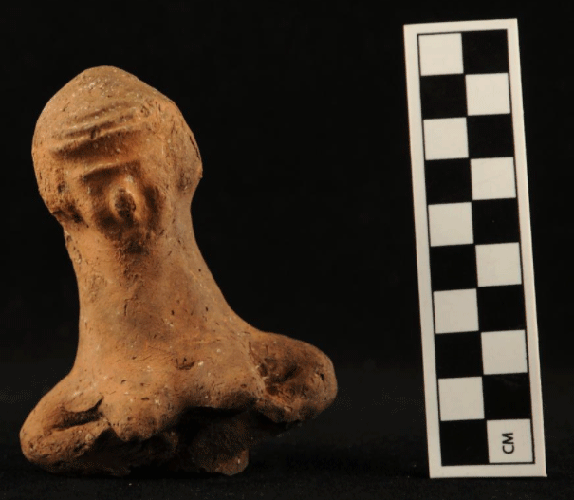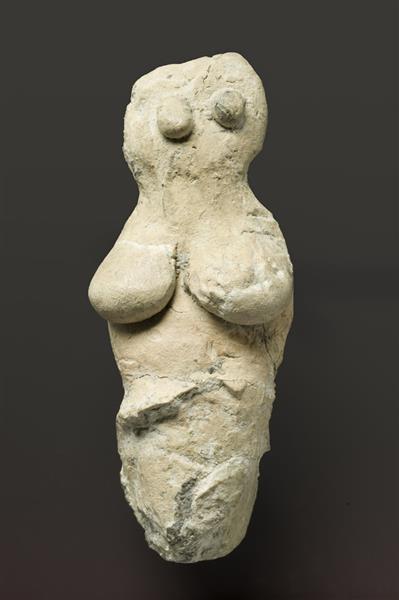|
The Hebrew Goddess
and the Cedar Trees
By Dean Adams Curtis
What cedar trees and a Hebrew goddess have in common may surprise you.
Cedar trees were venerated by early Hebrews, Samaritans, and Canaanites alike.
That this was so, is nowhere more obvious than in The Bible's Old Testament. This article concludes with some of the seventy-plus citations.
Whether standing alive in the mountains, carved into iconic representations of a goddess, or sawed into beams and planks for temples, cedar was special. As has been noted often in archaeomythology,
what humans have found to be essential often becomes viewed as sacred. Cedar is a hard red wood that insects find hard to assault.
Early Hebrews, Samaritans, and Canaanites and other tribal clans knew their goddesses variously as Asherah, Asher, Astarte, and Anat. If these names are unfamiliar to you,
it is because awareness of them descended into the rich soil of prehistory, and between Old Testament pages, as male dominated history progressed.
Yet the goddesses keep coming out of Middle Eastern ground in abundance into the hands of archaeologists. They have been studied extensively by scholars and are available for your review in museums around the globe.
|

Striking resemblance Early clay figure from Abraham and Sarah's Ur in present-day Iraq
looks a lot like later goddesses, such as Asherah. Click to examine her more closely at U Penn.
|
Asherah idols were found under trees, carved out of living trees, and set into the Earth at/as altars.
Asherah, the tree of life, later evolved into Syria's early goddess named Artemis.
A passage from The Bible's Old Testament chapter Deuteronomy (16:21) illustrates this. It orders: "You shall not plant for yourself an Asherah of any kind of tree beside the altar of the Lord your God..."
A sentence from Second Kings (18:4) notes, "He removed the high places and broke down the sacred pillars and cut down the Asherah."
Prehistoric Hebrew goddesses probably inspired the still surviving concept of Shekhina, who is the all-encompassing feminine deity of the Kabbalistic and Hasidic mysticism. They probably also inspired the Kabbalah's wanton virgin love-goddess, known as Matronit.
|

Neolithic antiquity One of the interesting figures found by French
archaeologists at a site near the Jordan River below the Sea of Galilee.
|
Let's go back for a moment to the roots of this cedar tale.
250,000 years ago, anatomically modern Homo Sapiens lived in the Middle East. They buried their dead carefully and kept their caves tidy.
From 115,000-to-65,000-years-ago, Neanderthals moved south into the region, due to colder conditions that made their European homelands less habitable.
Moving right along, we'll fast forward 45,000 years...
Jericho was founded about 9000 years ago. Back then it didn't have any wall to come tumbling down. The earliest artifacts discovered at Jericho include an oval ring of stone footings that once secured columns made from tree-trunks.
Several hundred miles northwest of prehistoric Jericho, the world's first known city Catal Huyuck (meaning forked-mound) was already a thousand years old. In Turkey, on the Central Anatolian plateau, goddesses had been conceived of, repeatedly painted on fresco-style walls, sculpted from clay, and presumably worshipped for over a millennium.
Folks known as the "Sea People" to archaeologists sailed to the shores of the Middle East. They almost certainly brought their goddess theology with them from Crete, Cyprus and the Aegean islands from which they came. They settled into a landscape that now spreads from Palestinian Gaza, along Israel's Mediterranean coast and up into Lebanon, the land once known as Canaan.
By the time the Sea People arrived, Jericho was a crescent-moon-shaped city and its walls had begun to grow. The Sea People most likely brought their goddesses with them from Crete and other islands, worshipping the goddesses in their Middle East settlements.
When Abraham and Sarah led their Israelite family-clan-community into the rolling hills of Canaan, they settled in an area already populated for at least 250,000 years. Not only did they probably bring with them the goddess Inanna, they settled among people who included goddesses among their deities.
Following are sentences from the Old Testament of the Bible, containing the word "cedar" and/or containing the names of the Hebrew/Canaanite goddesses.
The sentences were retrieved for your perusal by using an Internet Bible search engine.
"Take your father's bull and a second bull seven years old, and pull down the alter of Baal which belongs to your father, and cut down the Asherah that is beside it; and build an altar to the Lord your God on the top of this stronghold in an orderly manner, and take a second bull and offer a burnt offering with the wood of the Asherah which you shall cut down.
"When the men of the city arose early in the morning, behold, the altar of Baal was torn down, and the Asherah which was beside it was cut down, and the second bull was offered on the altar which had been built. Then the men of the city said to Joash, "Bring out your son, that he may die, for he has torn down the altar of Baal, and indeed, he has cut down the Asherah which was beside it." (Judges 6:25 - 6:30)
"If she is a wall, we will build towers of silver on her. If she is a door, we will enclose her with panels of cedar." (Missing citation)
"And Ahab also made the Asherah. Thus Ahab did more to provoke the Lord God of Israel than all the kings of Israel who were before him." (First Kings 16:33)
"This is what the Sovereign Lord says: A great eagle with powerful wings, long feathers and full plumage of varied colors came to Lebanon. Taking hold of the top of a cedar.
"...I myself will take a shoot from the very top of a cedar and plant it; I will break off a tender sprig from its topmost shoots and plant it on a high and lofty mountain.
"On the mountain heights of Israel I will plant it; it will produce branches and bear fruit and become a splendid cedar. Birds of every kind will nest in it; they will find shelter in the shade of its branches."
Now to what Second Kings (21:3) says about an Asherah:
For he rebuilt the high places which Hezekiah his father had destroyed; and he erected altars for Baal and made an Asherah, as Ahab king of Israel had done, and worshiped all the host of heaven and served them."
If you would like to explore furthers citations, you too can type the word "cedar" into an Internet Bible search engine and watch as over seventy references pop up. Or, you might wish to navigate the subject matter in the novel
or the two non-fiction books we offer for your consideration.
|

















